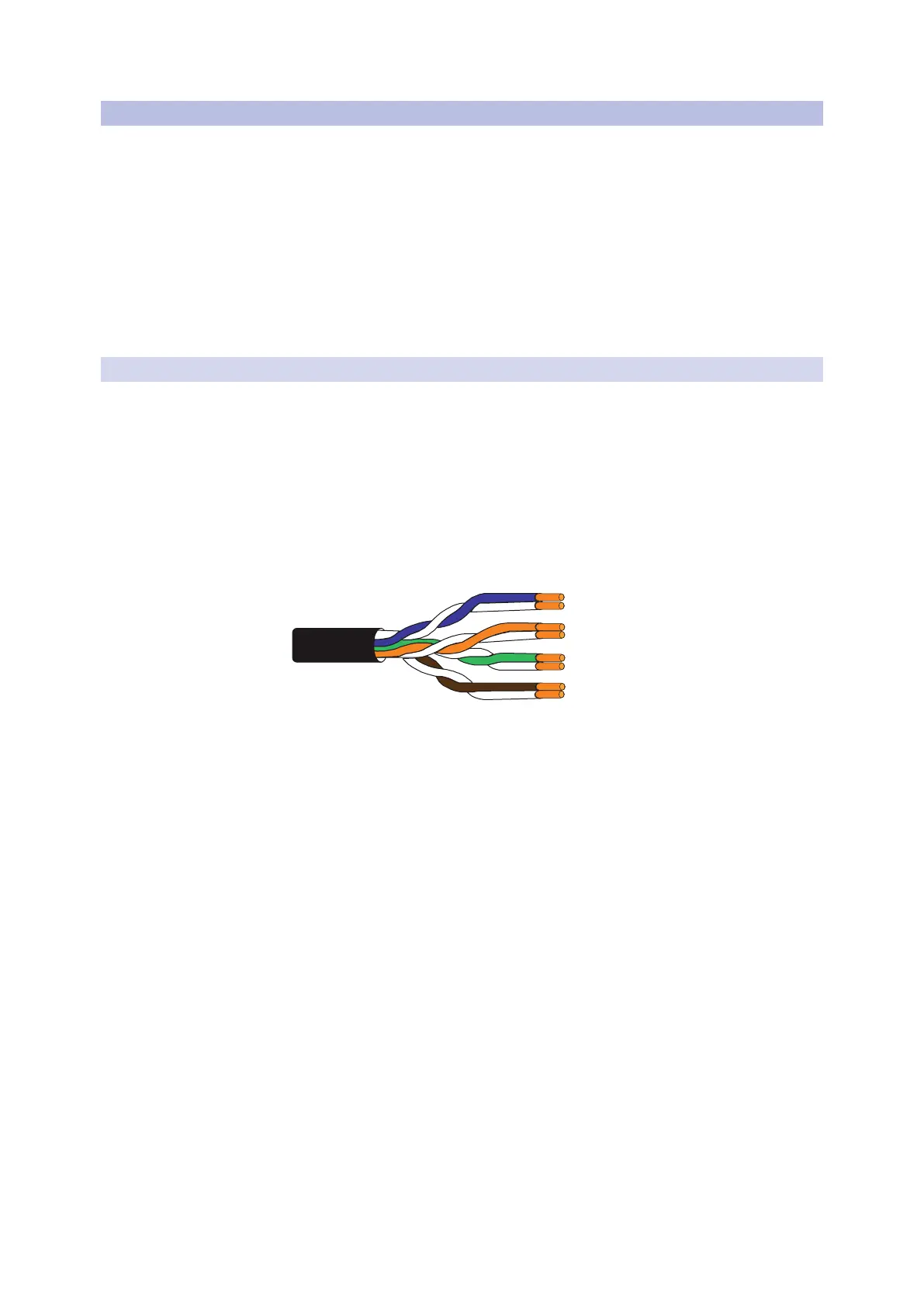PreSonus Worx Control handleiding
Handleiding
Je bekijkt pagina 5 van 35

3
2 Networking Your Loudspeaker
2.2 Choosing the Right Cables
Worx Control
Software Reference Manual
2.2 Choosing the Right Cables
Whether used for control or for Dante audio, LAN networks rely on a set of standards
for cabling infrastructure to ensure that network performance is both reliable and
consistent. These standards include specifications for the cable construction itself,
as well as specifications for the termination of cabling and physical connections to
devices. Deviations from these specifications can result in reduced performance and
even data loss, so it’s important to use the right cable for the job, and to use good
quality cable that meets the necessary specifications.
Cabling that is out of spec can result in dropped packets and intermittent
connections. For simple data networks, such as those used to stream video or
transfer files, it could just mean increased buffer times or transfer times. For live, real-
time audio, it can mean audible dropouts in audio or loss of audio altogether.
2.2.1 Cat5e and Cat6
While Dante itself doesn’t require Gigabit Ethernet, PreSonus recommends this
speed because of the stream- and channel-counts involved. While this isn’t a function
of the cables themselves (Gigabit Ethernet is handled by the devices and managed
switches), it is still an important consideration to keep in mind when building your
Dante network because you must select Ethernet cable that is capable of supporting
Gigabit speeds.
Copper-wire Ethernet networks generally use twisted-pair cable. Twisted pair cabling
is a type of wiring in which two conductors of a single circuit are twisted together
for the purposes of canceling out electromagnetic interference (EMI) from external
sources, and reducing crosstalk between neighboring pairs.
Dante networks require that the use of either CAT5e or CAT6 cables, both of which
support Gigabit speeds at lengths up to 100 meters, as specified by the TIA/EIA-568
standard. CAT6 is actually designed to support speeds up to 10 Gb/s (10GBASE-T
or 10 Gigabit Ethernet), but it is backwards compatible with CAT5e. The primary
differences between CAT5e and CAT6 cable are the wire gauge of the conductors
and the number of twists per inch in each wire pair. CAT6 cable uses heavier gauge
wire and more twists per inch, providing lower crosstalk, higher signal-to-noise ratio,
and an overall better performance rating than the CAT5e equivalent.
Which type of cable you choose for your application depends on a number of factors.
Network design, installation type (fixed or mobile), budget, and considerations for
future applications should all be taken into consideration when selecting the type of
cable you will use. CAT5e cable is usually slightly more cost effective, may be easier
to work with, and still fully supports Gigabit speeds, but Cat6 is generally a better
choice and is well worth the additional investment, especially when taking future use
into consideration, given its capacity for faster speeds.
Power User Tip: Always source your cable from a reputable vendor to ensure you are
purchasing a high-quality product that meets the industry and engineering specifications
it claims by its Category label (CAT5e or CAT6). Never purchase cables labeled CCA
(Copper Clad Aluminum), as it does not meet the TIA/EIA specifications for Cat5e and
Cat6 cabling.
Bekijk gratis de handleiding van PreSonus Worx Control, stel vragen en lees de antwoorden op veelvoorkomende problemen, of gebruik onze assistent om sneller informatie in de handleiding te vinden of uitleg te krijgen over specifieke functies.
Productinformatie
| Merk | PreSonus |
| Model | Worx Control |
| Categorie | Niet gecategoriseerd |
| Taal | Nederlands |
| Grootte | 4962 MB |





